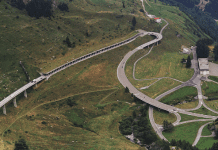If helping the environment and reducing your carbon footprint are on your to-do list, then you can start now by doing a few simple things. Check out this list and start saving the planet today.
Eat Less Meat
The most effective way you can help to reduce your carbon footprint is to stop eating meat. Even just reducing your meat consumption can make a huge difference. Red meat is particularly to blame as it consumes 11 times more water and produces five times more emissions than poultry. You don’t have to go vegetarian, but eating less meat will significantly help the environment, and you don’t even have to leave the house.
Plant a Garden
Whether you live in a house or an apartment, planting a garden is a quick and easy way to reduce your carbon footprint. Plants absorb carbon dioxide, which is beneficial for humans. Try planting some bee-friendly flowers, a few trees, or a vegetable garden. If you live in a city, then have a look at Balcony gardens or a green roofing system from AAC Waterproofing.
Unplug Your Devices
All electronics use energy when they’re plugged in, even if they’re switched off. Anytime a wire is plugged into a socket, it’s drawing energy – so although your device isn’t charging, you’re still contributing to your carbon footprint. Leave your electronics unplugged at all times, unless you’re actually using them. Alternatively, you can just get a smart circuit breaker and automate the https://www.luminsmart.com/blog/smart-circuit-breaker/process
https://www.luminsmart.com/blog/smart-circuit-breaker/Drive Less
Walk, bike, or take the bus, whatever you do, leave the car at home more often. Today, more people are opting to bike to work, especially with bike lanes becoming more prevalent. Cities are investing in the necessary infrastructure to make it easier not to own a car, which is great news, and also many new bus routes are turning to hybrids, solar power, and other eco-friendly
alternatives. As well as this, many cities are increasing walkability as architects are incorporating more outdoor and green spaces, and new buildings focused on green infrastructure and community engagement.
Don’t Buy “Fast Fashion.”
“Fast fashion” is the term used for the clothes most people buy, an endless cycle of must-have trends sold at extremely low prices. Also, anything made overseas has a huge environmental impact – from the physical act of shipping a product across the ocean to the chemical runoff from garment factories Try alternatives like re-purposing old clothing, choosing locally handmade garments, buying vintage, or participating in clothing swaps with family and friends.
Eat Local
Try to eat local, in-season produce because this helps to reduce the carbon footprint created by shipping foods from elsewhere. If a fruit or vegetable can be grown in your own garden or at a local farm, the environmental cost is significantly reduced. Think about the journey that food from another country has to take, whether it’s by plane, ship, train, or truck; the food not only has to travel, but it also has to stay cool, so it doesn’t spoil.
Line-Dry Your Clothes
The traditional method of line-drying your clothing is much better for the environment. Did you know that just one dryer load uses five times more electricity than washing? By simply hanging out your clothes to dry, you can save one-third of your carbon footprint.









































